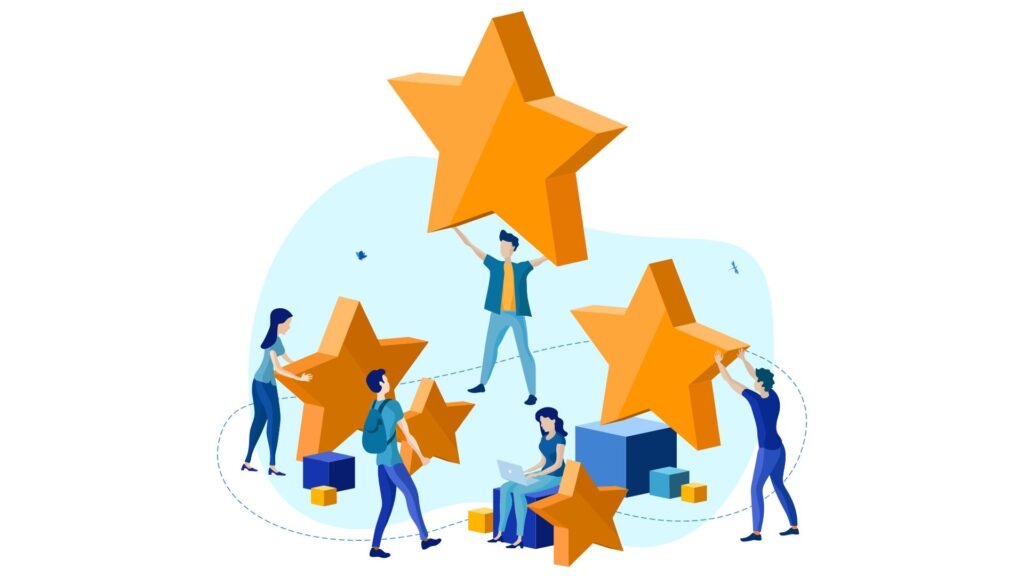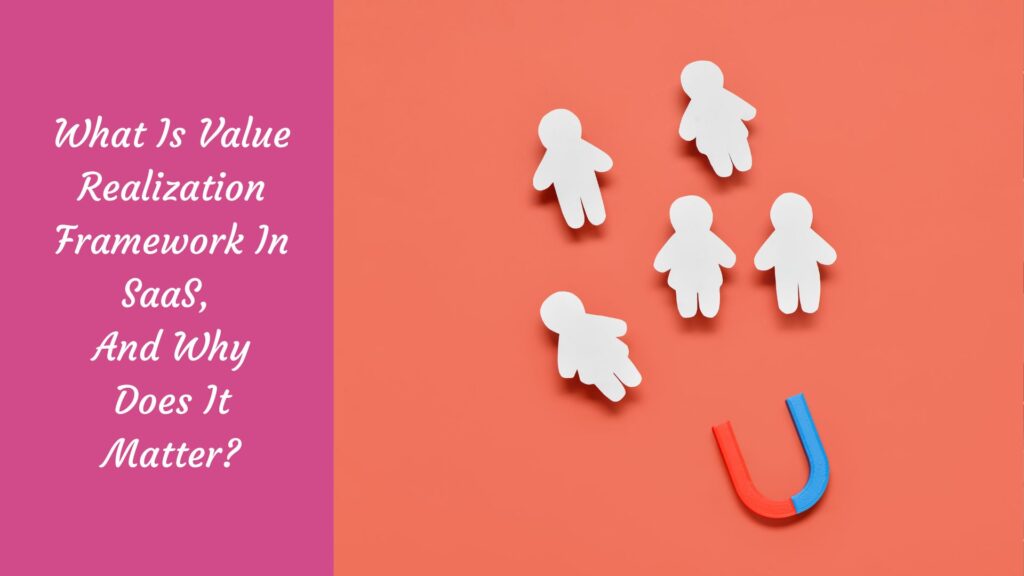In the dynamic world of the Software as a Service (SaaS) industry, success goes beyond having an innovative product or service. It’s about embracing the transformative power of the Value Realization Framework. 🚀🌟
This framework embodies the customer journey, from initial engagement to the tangible value derived from your SaaS offering. Whether you’re a seasoned pro or a newcomer, unlocking the potential of this framework can lead to unparalleled value and business triumph. 💪💼
Dive in to explore the significance of the Value Realization Framework and how it propels your SaaS business to new heights. 🌈✨
What is the Value Realization Framework?
The value realization framework is a strategic tool used in the SaaS industry to maximize customer satisfaction and retention. 🚀 It articulates the process by which customers achieve significant value from a product or service, from the initial stages of adoption through to achieving the desired business outcomes. 💪🎯

- Understanding the Customer’s Business Goals: The first step in the value realization framework is to understand the customer’s business objectives and how the SaaS solution aligns with those goals. For instance, a company might want to improve customer service, streamline operations, or increase sales. Understanding these goals allows the SaaS provider to tailor their offering to meet these objectives.
- Implementation and Adoption: After aligning the SaaS offering with the customer’s business goals, the next stage involves effective implementation and adoption. Here, the SaaS provider ensures that the customer’s team is well-equipped and trained to use the software effectively.
- Measuring Success: Once the SaaS solution is in place, it’s essential to track key performance indicators (KPIs) to measure success and assess if the customer’s goals are being met. For example, if the goal was to boost sales, a relevant KPI could be an increase in sales conversion rates.
- Continuous Improvement and Optimization: The final stage involves continuously improving and optimizing the SaaS solution to ensure that it continues to deliver value as the customer’s business evolves. It might involve refining features, updating functionalities, or providing ongoing support and training.
By applying this Value Realization Framework, 🚀 SaaS companies can ensure that their customers not only achieve their desired outcomes but also derive maximum value from their SaaS investment. 💪💰
Importance of Value Realization Framework

The value realization framework plays a pivotal role in the SaaS industry for several reasons:
- Customer Retention: The value realization framework helps SaaS companies maintain a strong customer base. By helping customers achieve business goals and maximize SaaS value, businesses can boost loyalty and reduce churn. For example, if a SaaS company provides a CRM and follows this framework, it can closely align its product with the customer’s goal of improving its customer relationship management, leading to higher customer retention rates.
- Revenue Growth: This framework also directly impacts revenue growth. When customers recognize the value they’re getting from a SaaS product or service, they’re likely to maintain or increase their investment. For instance, if a cloud-based project management tool increases a customer’s project turnaround times and overall productivity, they may decide to upgrade their subscription plan, driving revenue for the SaaS provider.
- Competitive Advantage: The Value Realization Framework can also give a SaaS company a competitive edge. In a crowded marketplace, SaaS companies that can demonstrate tangible value to potential customers will stand out. For example, an email marketing software that uses this framework to guide their clients from adoption to achieve higher email open rates can leverage this value realization as a unique selling proposition.
- Customer Satisfaction: Lastly, the Value Realization Framework leads to higher customer satisfaction. By focusing on the customer’s goals and continuously optimizing the product to meet these objectives, SaaS companies can ensure a positive customer experience. As an illustration, consider a company offering analytics software. If they use this framework to help their customers better understand their own data and make informed decisions, this could lead to extremely satisfied customers who are likely to recommend the software to others.
The Value Realization Framework is an indispensable tool in the SaaS industry for driving customer retention, revenue growth, competitive advantage, and customer satisfaction. 💪📈🔥😊
21 Value Realization Framework Metrics to Track
To fully leverage the value realization framework in the SaaS industry, keeping a close eye on specific metrics is essential. These metrics will illustrate how well your SaaS product or service is performing in relation to the customer’s goals, allowing for continuous optimization and value realization. Here are twenty-one metrics you could consider:

- Onboarding Time: The speed at which new users become proficient with your software.
- User Adoption Rate: The percentage of users actively engaging with your software.
- Daily Active Users: The no. of unique users who interact with your software in a given day.
- Monthly Active Users: The no. of unique users who interact with your software in a given month.
- Customer Churn: The rate at which customers stop doing business with you over a given period.
- Revenue Churn: The loss of revenue due to customers downgrading or canceling their subscriptions.
- Net Promoter Score (NPS): Customer likelihood to recommend your product or service.
- Customer Satisfaction (CSAT): A measure of how satisfied customers are with your product or service.
- Customer Effort Score (CES): A measure of how easy it is for customers to use your product or service.
- Feature Adoption: The rate at which users adopt new features after they are introduced.
- Average Revenue Per User (ARPU): The average revenue generated per user.
- Gross Profit Margin: The percentage of revenue the company retains after deducting direct costs of producing goods and services.
- Customer Lifetime Value (CLTV): The total revenue expected from a customer over the duration of their relationship with your business.
- Sales Conversion Rate: The percentage of prospects that become paying customers.
- Support Ticket Volume: The number of customer support requests received over a given period.
- Ticket Resolution Time: The average time it takes to resolve a customer support ticket.
- Upselling Success Rate: The rate at which existing customers purchase a higher-end product or upgrade.
- Cross-selling Success Rate: The rate at which existing customers purchase additional products or services.
- Retention Cost: The cost of retaining existing customers.
- Cost per Acquisition (CPA): The total sales and marketing cost required to acquire a new customer.
- Referral Rate: The rate at which existing customers refer new customers to your product or service.
By tracking these metrics, SaaS businesses can have a comprehensive overview of their performance and make data-driven decisions to enhance their value realization. 📊💡✨
Seven stages of the value realization process
The value realization process can be segmented into seven stages. Each stage is crucial in ensuring that the customer experiences maximum value from the SaaS product or service. 💎📈

- Needs Identification: This first stage involves understanding the customer’s needs and aligning those with the capabilities of your SaaS product. For example, if a customer needs a project management tool to enhance productivity, understanding specifics like integration needs, team size, and the complexity of projects will help in providing a tailored solution.
- Solution Mapping: Once the customer’s needs are identified, the next step is to map those to your SaaS offering. It could be demonstrating how your CRM tool can help a sales team track leads more effectively or how your collaboration tool can improve inter-departmental communication.
- Onboarding and Training: During this stage, customers are trained on how to utilize the SaaS product. Effective onboarding ensures the customer can start realizing value as quickly as possible. It may involve tutorials, webinars, or hands-on training sessions.
- Adoption: This stage is about ensuring the customer is actively using the tool and adopting its features in daily operations. For example, ensuring a marketing team is utilizing the analytics features of your marketing automation platform.
- Value Measurement: This stage involves measuring the actual value the customer is deriving from the SaaS product, using metrics like increased efficiency, reduced costs, or improved sales figures.
- Optimization: Based on the value measurement, the SaaS product is then optimized to increase its value. It may involve introducing new features, improving user interface, or enhancing integration capabilities.
- Expansion: The final stage is about growing the customer’s usage of the product, either by upselling more features, cross-selling other products, or increasing the number of users. It can come naturally if the customer is realizing significant value from the SaaS product.

Taking a customer through these seven stages can help a SaaS company deliver continuous value, thereby increasing customer retention and loyalty. 🚀💎🔒
Conclusion
Value realization is not a one-time event but an ongoing journey that propels SaaS businesses toward success in their industry. 🚀 By embarking on the seven stages, companies can unlock a world of possibilities. It starts with understanding customer needs, mapping out ingenious solutions, and providing seamless onboarding and training. 🔑 Fueling adoption is the key to igniting value, which should then be diligently measured and optimized. As usage expands, so does the boundless potential for growth. 📈 With every milestone reached, customer satisfaction and retention soar. 😄 So, let’s make value realization the heartbeat of your business strategy. Keep a close eye on those metrics and continuously strive to exceed customer expectations. The road to success is paved with unwavering dedication to delivering unparalleled value! 💪

10+ years experience in Marketing and Operations
